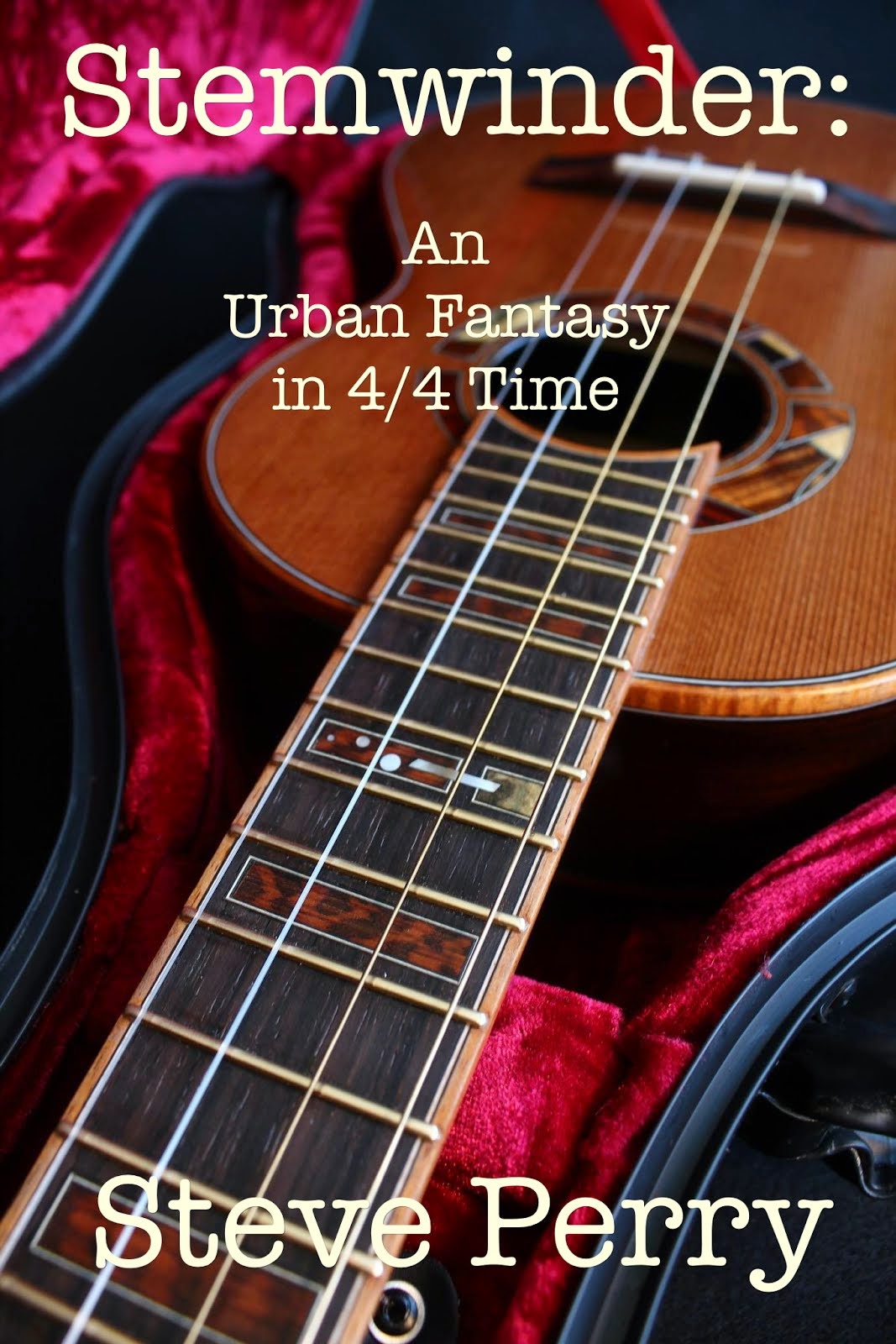If you are musically inclined, you know why; if not, that's because C-major is the simplest key: The notes are "whole," i.e. without any sharps or flats necessary in the notes/chords.
Um. Anyway, so we had the song in C, which is easy to play. Thing was, it was a vocal stretch for most everybody in that key. I could sing bass at the bottom of my range, but the high end was way up there.
So, the solution was to rearrange the piece into another key, and the pianist suggested E-major, since that would be down (or up) enough steps for us to hang out comfortably.
Easy for a pianist to say. If you are playing a piano, you can go off into to sharp- or flat-land, just use the black keys, but if you are a guitarist, or strumming a ukulele, the farther away you get from C, the more likely it is you will have to use a finger-busting chord.
No sharps nor flats in C, but four-sharps in E.
If you are good guitarist and have the barre chords all the way up the neck, you can adjust keys fairly easily–move everything up or down, stay relative, no problem; however, if you are still stuck in what are call the "cowboy chords," up in first position (that's near the little tuning pegs and gears and all), then shifting from a C#minor chord to an F# to an E can get to be tricky in a hurry. Most of the guitarists and uke players where I jam still use the cowboy chords most of the time.
You can use a capo, which allows you to play different keys using simpler fingering. Play it in C, capo up four, presto! E! but the uke players don't have 'em.
So I compromised and redid it in G. I think most of us can get it there, and there only one sharp in that key.
We'll see how it goes ...
















3 comments:
Interesting. Hendrix wrote a lot of songs in odd keys for guitar like F# (Foxy Lady, Little Miss Lover) and C#(Burning of the Midnight Lamp, Spanish Castle Magic)
Yeah, but he was Hendrix. Not a lot of folks kept up with him.
Jazz players go there, too, songs with five-fret stretches. E-flat13-aug-sus-Bob's-your-uncle-once-removed chords ...
And once you get into alternate tunings, that does interesting things to chords and scales, too.
We can't go there. I can figure out several positions where I can get the majors, minors, and sevenths, now and then a ninth, but I'm putting in an hour and half a day, though most of it is repertoire. I know only a few scales, and now then, I can work out a fill or riff to go with the rhythm.
We're just not really adept players at the local basement group. Most of them really enjoy the get-togethers, but only a couple of them actually practice during the rest of the week. They come to a chord they don't know, they just skip it.
I'm working on getting the other guitarists to play up the neck, especially for a couple of simple blues songs -- we play St. James Infirmary in Dm -- so you can do it with three chords (Dm, A7, Gm,) and there's only one fret shift, from the fifth fret to the third and back, and it's slow enough to do pretty easily.
Like anything else, you get out of it what you put into it.
The jam group I was in before this one, I was one of the least accomplished players, so I had to hustle to keep up. That was good.
In this group, I'm the best guitarist (that's a relative term here), so I'm trying to help the others get better. Learn a lot by teaching, too ...
=) When I heard stuff by Joe Pass and Wes Montgomery I knew I would never be able to play it. And I was right!!
+)
But I did have fun trying.
I really enjoy your writing on this btw as it is making me want to get back into some things.
Post a Comment